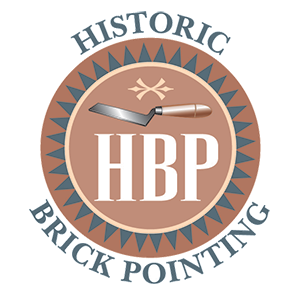ABOUT TUCKPOINTING
Between the late 17th and early 20th century, tuck pointing was frequently employed to imitate the fine joints in gauged brickwork. It was also sometimes used to disguise irregular shaped damaged or cheap bricks. The joints are filled flush with a self colour ed mortar to match the existing bricks and then scored with a narrow grove onto which a thin ribbon of finer mortar (usually white) is pressed or tucked. The geometric exactness of tucked ribbon disguises any irregularity in the bricks or bonding that gives the desired illusion of tight joints in quality gauged brickwork. The wholesale tuck pointing of a complete elevation is necessary as it cannot be patch repaired to achieve the best results.
MATERIALS
Masonry in old buildings is usually constructed with lime mortars.
Common lime mortar comprises of lime mixed with well graded and washed aggregates, the lime acts as a binder while the aggr- egate provides bulk and dimensional stability, also earth pigments such as red, yellow ochre, brown umber are used to colour the lime mortars when re-pointing bricks to match the existing brickwork.
Lime has been used in buildings for at least seven thousand years and it is only in the last 50 years that its use has declined. From the mid 20th century rapid changes in construction methods were introduced. Many of these materials such as Portland cement may be suitable for contemporary buildings but have been found to be incompatible with neither reconstruction of old buildings nor with historic mortars for restoration or conservation practices, mainly because the strength and density of cement mortars cause serious problems where used on historic masonry.
Strength is critical because to be suitable the mortar must be weaker than the brick it is used with, so that if the stress in the wall leads to failure, fracture lines occur in the mortar, not in the brick itself. Lime mortars are very flexible and can tolerate a degree of movement without failure unlike non flexible and brittle cement mortars. This in itself makes cement mortars and lime mortars disastrous bedfellows, particularly where a traditionally lime mortar constructed wall has been re-pointed in a cement mortar. In this case, the core remains flexible but the softer surface is now rigidly bound by the new hard cement mortar, and the seasonal movement causes stress in the surface of the brick, commonly resulting in spilling brickwork or stonework.
WEATHERING AND FAILURE
Sacrificial decay of mortar:
The masonry of old buildings must be allowed to breath whereas modern buildings rely on keeping water out with a system of barriers, the walls of the buildings that pre-date mid-19th century are usually constructed of absorbent materials that allow any moisture that enters to evaporate back out – the raincoat and over coat effect. As lime and earth based mortars are normally more permeable than the materials they sit between, gr eater evaporation takes place through the joints. Salt deposition and frost action are consequently greater at the exposed faces of the joints, causing them to decay faster than the surrounding masonry. Since it is cheaper and easier to re-point at intervals than to replace bricks, the pointing may be regarded as sacrificial.
Unsuitable strong mortar mixes and inappropriate joint finishes:
It is rare for an original mortar mix to be too strong for the fabric (bricks), but impermeable cement based mortars have often been used for later re-pointing, frequently in the mistaken belief that this would make the wall more weather resistant. What actually happens in that rain water is shed from the joint faces onto the surrounding masonry. It is then unable to dry out through the whole wall as originally intended, and instead escapes through the external face of the brick. Furthermore cement mortars produce higher levels of potentially harmful salts as they set and these may be transferred to the masonry units. The combination of increased dampness in the masonry units with the cycles of frost and thaw action and salt crystallization on the face of the brick accelerates the rate of decay and leaves the cement mortar face standing proud. The practical consequence of delaying re-pointing is an increasing penetration of moisture into the wall, leading to greater erosion of the wall face.
The walls that are built and re-pointed with lime mortars will absorb moisture readily, but will also dry readily so damp will not penetrate far into the wall. The profile of joints is as important as the correct choice of mortar. Later forms of joint finish such as Victorian weather struck or modern bucket handle are unsuitable for re-pointing older buildings.
PLANTS AND WILDLIFE
Ivy should be prevented from growing on old walls. Hedera Helix is particularly harmful, its aerial roots can penetrate small crevices and loose blocks and bricks, rapidly creating pathways for moisture to enter into the heart of the wall. Additionally dense ivy growth at wall heads can increase wind loads and contribute to structural failure.
Masonry bees, Osmia Rufa are another natural threat to pointing. They are increasingly burrowing into soft lime mortar joints due to a decline in the number of their natural habitats. Their holes disrupt the bearing capacity of the mortar and tend to fill with water that expands on freezing and causes deterioration. Birds can also attack the mortar in order to get at the bee larvae.
Historic Brick Pointing offers a range of traditional styles and mixes of lime mortar pointing, especially tuck pointing. We carry out samples free of charge and are more than happy to give advice.
